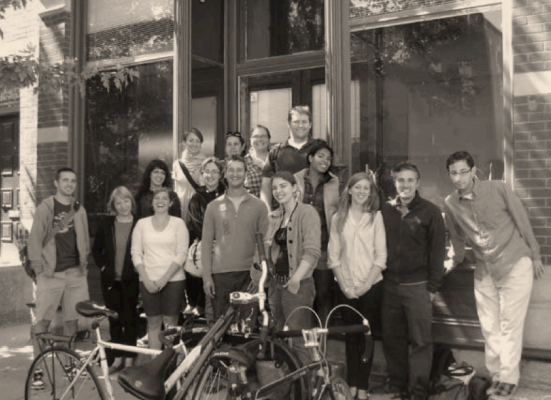
Roger Brown Study Collection Window Conditions Assessment and Recommendations

PROJECT SUMMARY
The Roger Brown Study Collection is housed in an 1889 two-story brick storefront building on North Halsted Street in Chicago’s Lincoln Park neighborhood. The building’s most notable resident, the late twentieth-century artist Roger Brown, bought the building in 1974 and lived and worked there until his death in 1997. The building is currently owned by the School of the Art Institute of Chicago and today houses the Roger Brown Study Collection which maintains and interprets the artist’s work and Brown’s own collection of outsider art. A National Register of Historic Places status is currently being pursued for the structure, focusing on Roger Brown’s significant role in the development of late twentieth century American art.
A Building Diagnostics class from the School of the Art Institute of Chicago’s M.S. Historic Preservation Program was tasked in Fall 2010 with documenting conditions and proposing recommendations for the restoration of the facility’s exterior windows. Under the direction of professor Anne Sullivan, the class visited the Roger Brown Study Collection in September of 2011 and met with collection director Lisa Stone to discuss the history and significance of the building and the collection. The class worked in small groups, carefully assessing each exterior window on the site: measurements and photographs were taken and detailed observations of all interior and exterior window components and hardware were made.
Using this documentation, the class assembled a detailed window restoration schedule which includes the assigned name and location of each window; the presence and condition of storm windows, lifts, locks, sash cords, window coverings (ie. screens), and infill; the overall condition of the window frames, sashes, and sills; any comments about the window condition; and for each window a list of treatment recommendations. Specifications for restoration products and treatments were also assembled.
FINDINGS
Common problems found among almost all of the windows were overcaulking, overpainting, sashes painted shut, dry and cracking putty, missing hardware and sash cords, insufficient weatherstripping, cracked glazing, and “alligatoring” of the exterior paint finishes. Also found on the inside face of some window sashes were plexiglass panels applied directly to the interior face of the sash, a UV-resistant solution originally installed by Roger Brown to protect his collection from sun damage.
Original nineteenth century wood storms remain along the west elevation. Many were replaced in the 1970s with contemporary aluminum storms. A number of openings currently have no storm protection. The class found that all storms are in satisfactory condition, but that many require repair and reglazing.
